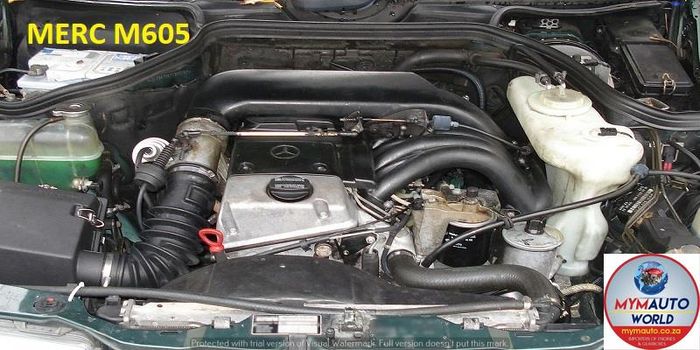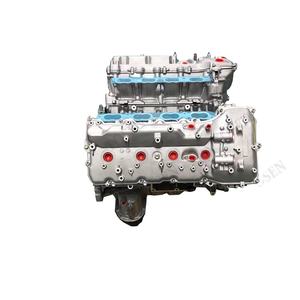Opel Corsa Engine: Common Issues and How to Fix Them
Opel Corsa Engine: Common Issues and How to Fix Them
Blog Article
Checking Out the Inner Operation of a Compact Vehicle's Engine System
As vehicle drivers, we commonly consider given the complex processes that take place within the boundaries of our car's engine system. The portable yet complex equipment that thrusts us forward is a wonder of engineering precision and sychronisation. From the controlled surges in the combustion chamber to the careful timing of gas shot, every element plays a vital role in the smooth procedure of the engine. In this exploration of a small vehicle's engine system, we will decipher the inner functions of this mechanical symphony, losing light on the enigmas that drive us forward on our day-to-day trips.
Burning Refine Introduction
The combustion procedure in a portable automobile's engine system is an important device that effectively converts fuel right into energy to power the vehicle. This process occurs within the combustion chamber of the engine, where gas and air mix, fire up, and create regulated surges. The combustion procedure contains four main phases: consumption, exhaust, compression, and power.
During the consumption stage, the piston moves downward, drawing in a mix of air and gas right into the burning chamber. This down motion creates the power required to drive the vehicle. This cyclic combustion process is essential to the operation of a portable lorry's engine system, making sure efficient power conversion for propulsion.
Piston and Cylinder Interaction

The piston's precise fit within the cyndrical tube is necessary for maintaining optimal compression and stopping energy loss throughout combustion. Tight clearances in between the piston and cylinder wall surfaces make sure reliable sealing, allowing the piston to move efficiently without enabling gases to leak past. Correct lubrication is additionally important to lower rubbing and put on between these elements, improving long life and efficiency.
Moreover, the design and materials utilized in manufacturing the piston and cyndrical tube impact engine effectiveness and toughness. Modern engines typically utilize lightweight yet resilient materials like aluminum alloys for pistons and cyndrical tube liners to reduce inertia and improve thermal efficiency. On the whole, the harmonious communication in between the piston and cylinder is basic to the engine's functionality and overall performance.
Fuel Shot System Performance
Gas injection systems in portable car engines play a crucial function in exactly supplying fuel to the combustion chamber for controlled and efficient ignition. The gas injection system operates by infusing fuel right into the combustion chamber at the optimal minute throughout the engine's operation (opel corsa engine). This exact timing makes certain that the fuel mixes equally with the air for appropriate burning, bring about boosted gas effectiveness and minimized discharges
There are mostly 2 sorts of gas injection systems utilized in small vehicle engines: port gas shot (PFI) and straight fuel shot (DFI) PFI systems inject fuel into the consumption port prior to the consumption valve, while DFI systems inject gas straight into the burning chamber. Both systems have their benefits, with DFI using far better fuel atomization and PFI supplying a more cost-efficient option.
Understanding Engine Cooling Mechanisms
Effective procedure of a small vehicle's engine relies heavily on the effectiveness of its cooling systems. Engine cooling is vital to stop getting too hot, which can bring about significant damages and lowered performance. The cooling system in a small lorry typically includes a number of parts working together to regulate the engine temperature. One critical component is the browse around these guys radiator, which uses coolant to take in warm from the engine. As the warm coolant flows with the radiator, it launches warm into the air, cooling off prior to returning to the engine. The water pump circulates the coolant through the engine and radiator, making sure a consistent flow to manage temperature. Furthermore, the thermostat helps regulate the coolant flow to maintain ideal engine temperature. Some lorries also have cooling followers that trigger when added air conditioning is required, such as during rush hour or heat. Comprehending these engine air conditioning mechanisms is crucial for preserving the efficiency and longevity of a compact automobile's engine system.

Exhaust System Parts Explained
The optimum performance of a small vehicle's engine cooling devices depends on a corresponding system recognized as the exhaust system, which comprises different Bonuses necessary parts for making certain effective discharges and engine efficiency. The exhaust manifold collects exhaust gases from the engine's cylinders and courses them to the catalytic converter.
One vital element of the exhaust system is the oxygen sensor, which keeps an eye on the oxygen levels in the exhaust gases to help manage fuel intake and guarantee optimal engine efficiency. opel corsa engine. Additionally, the resonator may exist in some exhaust systems to minimize sound levels. In general, the exhaust system plays a vital function in maintaining engine performance, decreasing hazardous emissions, and making sure a quieter driving experience for small vehicle owners

Final Thought
To conclude, the portable car's engine system is a complex mix of components that work together to facilitate the burning process, convert fuel into power, and expel waste gases. Understanding the internal operations of the engine system, including the piston and cyndrical tube communication, gas injection system, engine air conditioning mechanisms, and exhaust system components, is essential for maintaining ideal performance and efficiency of the automobile.
The burning procedure in a small automobile's engine system is an essential device that effectively converts gas right into energy to power the car.Fuel injection systems in compact lorry engines play a vital role in specifically supplying gas to the burning chamber for efficient and regulated ignition.There are primarily 2 types of fuel injection systems utilized in small automobile engines: port gas shot (PFI) and straight gas browse around these guys injection (DFI) Understanding these engine air conditioning devices is crucial for keeping the performance and longevity of a portable automobile's engine system.
The optimal performance of a small automobile's engine cooling mechanisms depends on a corresponding system understood as the exhaust system, which makes up different vital components for making sure effective emissions and engine performance.
Report this page